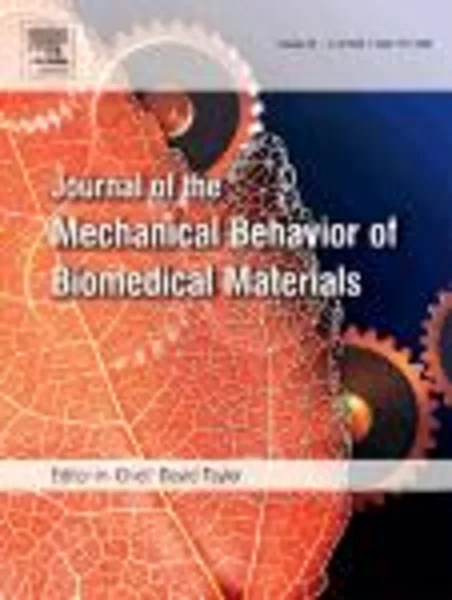-
the bond strength of the resin-to-zirconia interface using different bonding concepts
جزئیات بیشتر مقاله- تاریخ ارائه: 1394/01/01
- تاریخ انتشار در تی پی بین: 1394/01/01
- تعداد بازدید: 648
- تعداد پرسش و پاسخ ها: 0
- شماره تماس دبیرخانه رویداد: -
objectives. this study investigated the shear bond strength (sbs) and the tensile bond strength (tbs) of the zirconia-to-resin interface using different cement bonding concepts. methods. coplanar zirconia specimens were bonded to cocr-cylinders measuring 5 mm in diameter and 3 mm in height. all bonding areas were first sandblasted with 110 μm al2o3 (0.28 mpa, 10 s). sbs and tbs were determined after 24 h and 90 d of water storage as well as after 12,000 thermal cycles (tc, 5°/55 °c, 17 d). the bonding concepts consisted of the application of a silane coupling agent, tribological silica coating (rocatec system), cements or primers containing phosphone, mono-phosphate, or di-phosphate, and a combination of silica coating and primer. results. bond strength higher than 10 mpa was considered clinically sufficient. sbs measured with each bonding concept surpassed this value, except control and maxcem after 90 d. in contrast, tbs values were rather different. the application of a silane coupling agent alone showed very low values in the tbs test. silica coating was only sufficient after 90 d of water storage and when combined with phosphate–esters or phosphone-containing primers. bonding agents based on di-phosphates or phosphones showed stable tbs values of less than 10 mpa under different aging conditions. the predominant mode of failure was adhesive failure at the ceramic surface. conclusions. none of the investigated bonding concepts of the zirconia-to-resin interface provided clinically sufficient tensile bond strength. sbs values were inadequate for a sufficient ranking.
مقالات جدیدترین رویدادها
-
استفاده از تحلیل اهمیت-عملکرد در ارائه الگوی مدیریت خلاقیت سازمانی و ارائه راهکار جهت بهبود
-
بررسی تاثیر ارزش وجوه نقد مازاد بر ساختار سرمایه شرکت های پذیرفته شده در بورس اوراق بهادار تهران
-
بررسی تأثیر سطح افشای ریسک بر قرارداد بدهی شرکت های پذیرفته شده در بورس اوراق بهادار تهران
-
بررسی تأثیر رتبه بندی اعتباری مبتنی بر مدل امتیاز بازار نوظهور بر نقد شوندگی سهام با تأکید بر خصوصی سازی شرکت ها
-
تأثیر آمیخته بازاریابی پوشاک ایرانی بر تصویر ذهنی مشتری پوشاک ایرانی (هاکوپیان)
-
ارزیابی عملکرد حمل و نقل ریلی ایران در مقایسه با برخی کشورهای جهان به روش dea
-
کاربرد بسترهای نی زار در تصفیه پساب های صنعتی و بهداشتی (مروری)
-
چطور می توانیم در تدریس زبان انگلیسی مدرس موفق تری باشیم؟
-
بررسی عملکرد گسل کته در شمال شیراز (کمربند زاگرس چین خورده)
-
development of biocompatible fluorescent gelatin nanoparticles for cell imaging applications
مقالات جدیدترین ژورنال ها
-
مدیریت و بررسی افسردگی دانش آموزان دختر مقطع متوسطه دوم در دروان کرونا در شهرستان دزفول
-
مدیریت و بررسی خرد سیاسی در اندیشه ی فردوسی در ادب ایران
-
واکاوی و مدیریت توصیفی قلمدان(جاکلیدی)ضریح در موزه آستان قدس رضوی
-
بررسی تاثیر خلاقیت، دانش و انگیزه کارکنان بر پیشنهادات نوآورانه کارکنان ( مورد مطالعه: هتل های 3 و 4 ستاره استان کرمان)
-
بررسی تاثیر کیفیت سیستم های اطلاعاتی بر تصمیم گیری موفق در شرکتهای تولیدی استان اصفهان (مورد مطالعه: مدیران شرکتهای تولیدی استان اصفهان)
-
محاسبه کتاب فرهنگ و تمدن اسلامی در قم قرن سوم هجری، تاریخ قم از 182 تا 420، تاریخ محلی قم از ورود اسلام تا سقوط ال بویه
-
ایقاع منبعی نوین برای تشکیل شرکت: چالش ها و راهبردهای تئوری شخصیت حقوقی با عضو واحد
-
برنامه ریزی و سیاست گذاری توسعه صنعت گردشگری بر پایه ایفای نقش ستون های دولت محلی کارآمد در ایران
-
ویژگی های جامعه اخلاقی ایده آل از منظر مفسر بزرگ آیت الله جوادی آملی
-
experimental study on the structural behavior of cast in-situ hollow core concrete slabs




سوال خود را در مورد این مقاله مطرح نمایید :